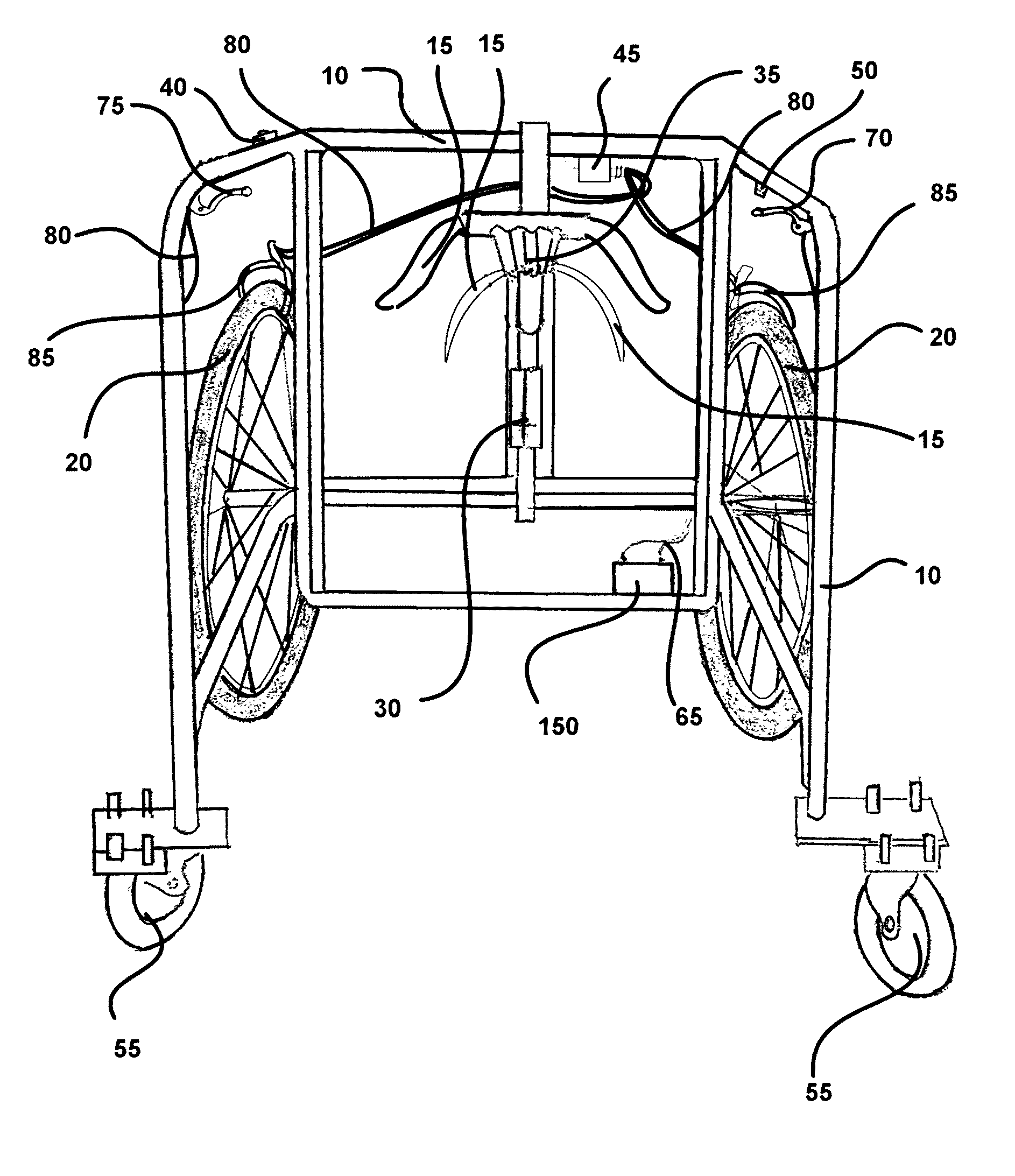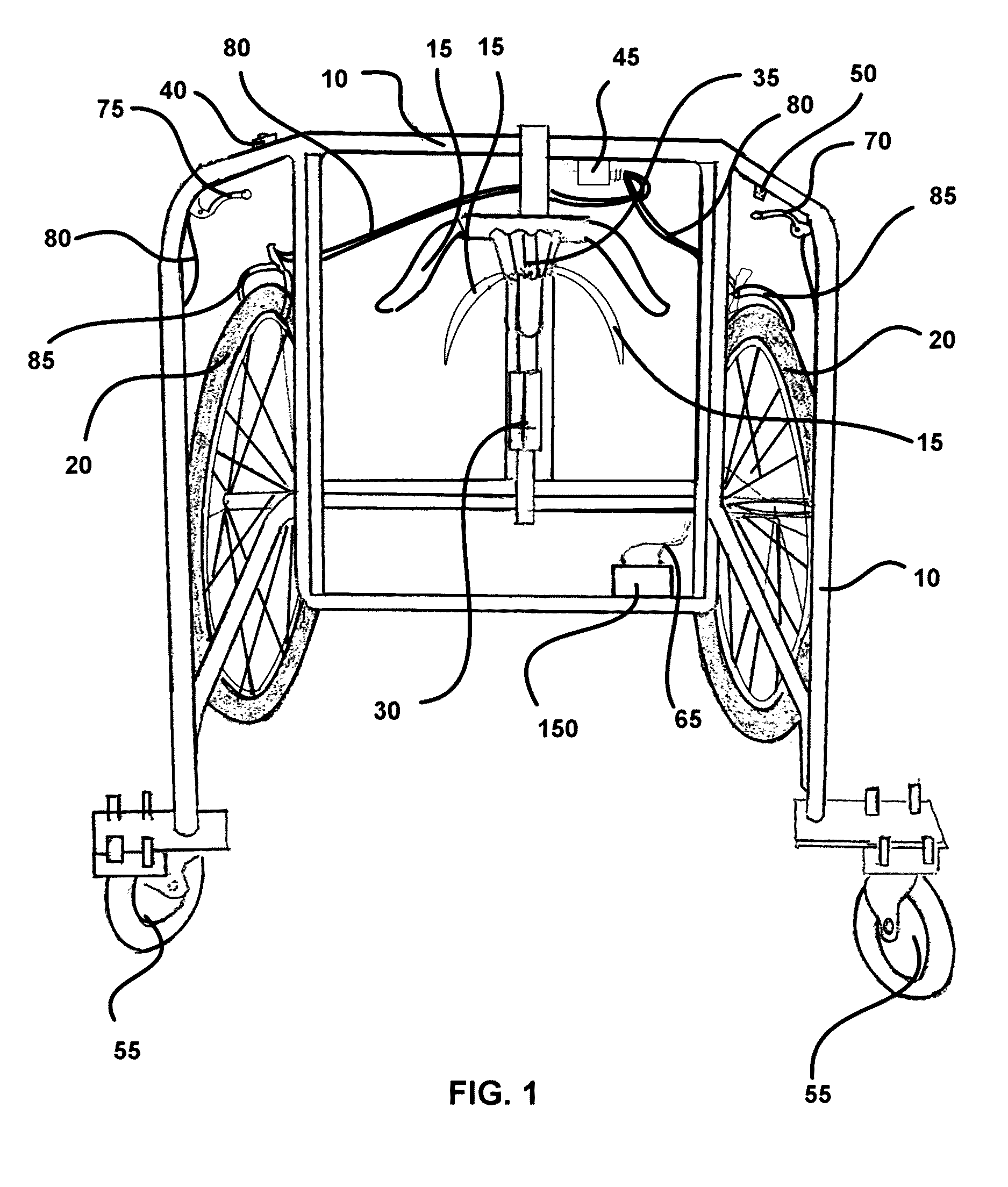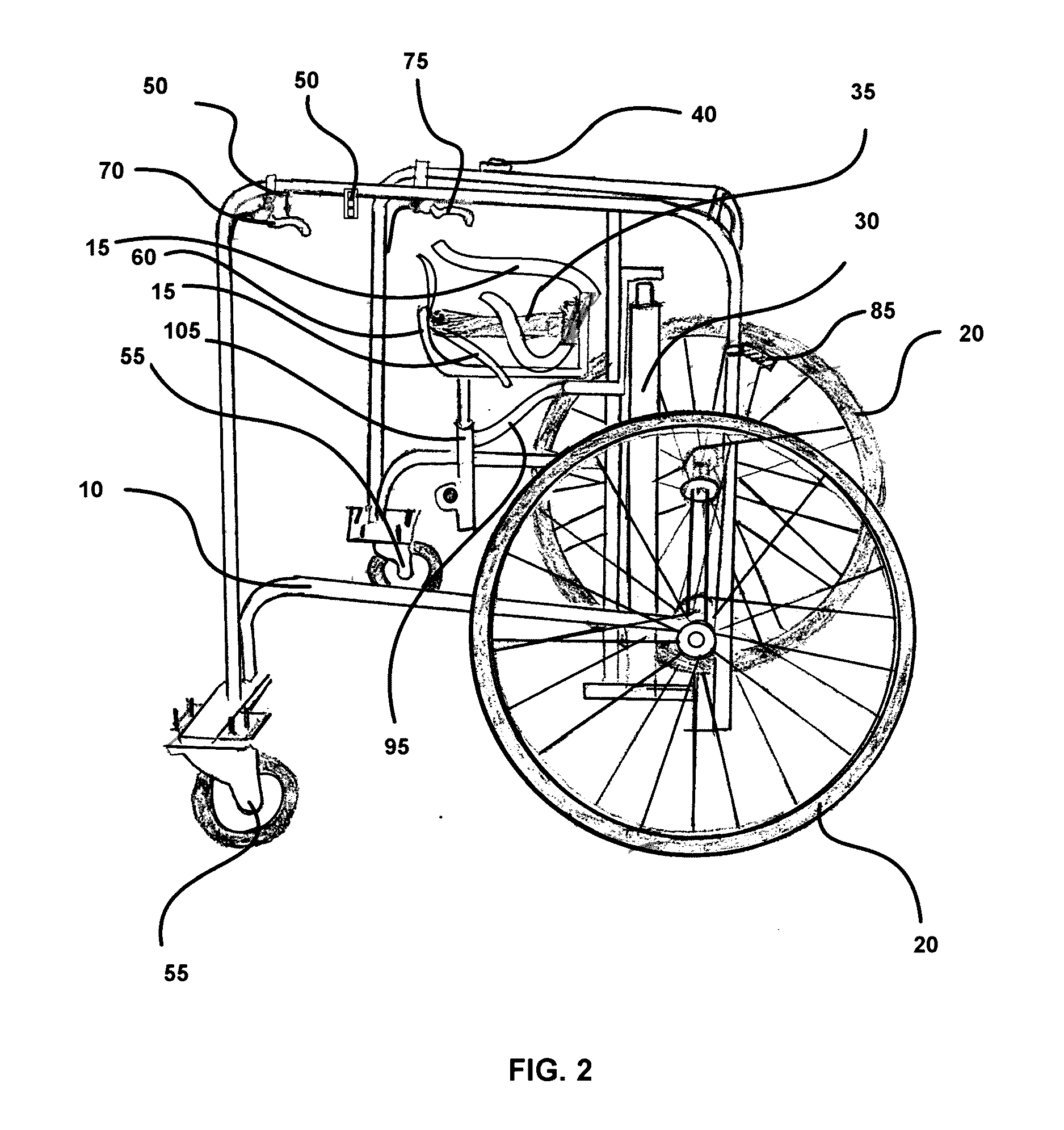Walking Assistance Apparatus
a technology for wheelchairs and users, applied in the field of wheelchairs, can solve the problems of poor mobility, low exercise benefit for users' legs, and inability to provide a means of movement for patients with very limited use of the lower extremities, and achieve the effects of overcoming the debilitating effects of a wheelchair, reducing the risk of falling, and facilitating the user's suppor
- Summary
- Abstract
- Description
- Claims
- Application Information
AI Technical Summary
Benefits of technology
Problems solved by technology
Method used
Image
Examples
Embodiment Construction
[0018]The present invention generally comprises a frame (10), wheels (20), a seat (35), a seat restraint (15), and a hydraulic seat-lift mechanism (30). The seat-lift mechanism (30) is powered via a DC power source (150), which is preferably disposed on or within the frame (10) of the present invention. The seat-lift mechanism (30) is preferably a hydraulic or electric piston or cylinder, configured to facilitate the raising or lowering of the seat (35) at the will and need of the user. As such, the present invention is designed such that the user may partially suspend his or her weight on the seat, while still using his or her legs to move, allowing the user to exercise. This is in contrast to conventional wheelchairs, which do not permit the user to exercise his or her legs during movement.
[0019]Various embodiments of invention are now described in more detail with reference to the accompanying figures and drawings, where some but not all embodiments of invention are displayed and...
PUM
 Login to View More
Login to View More Abstract
Description
Claims
Application Information
 Login to View More
Login to View More - R&D
- Intellectual Property
- Life Sciences
- Materials
- Tech Scout
- Unparalleled Data Quality
- Higher Quality Content
- 60% Fewer Hallucinations
Browse by: Latest US Patents, China's latest patents, Technical Efficacy Thesaurus, Application Domain, Technology Topic, Popular Technical Reports.
© 2025 PatSnap. All rights reserved.Legal|Privacy policy|Modern Slavery Act Transparency Statement|Sitemap|About US| Contact US: help@patsnap.com



